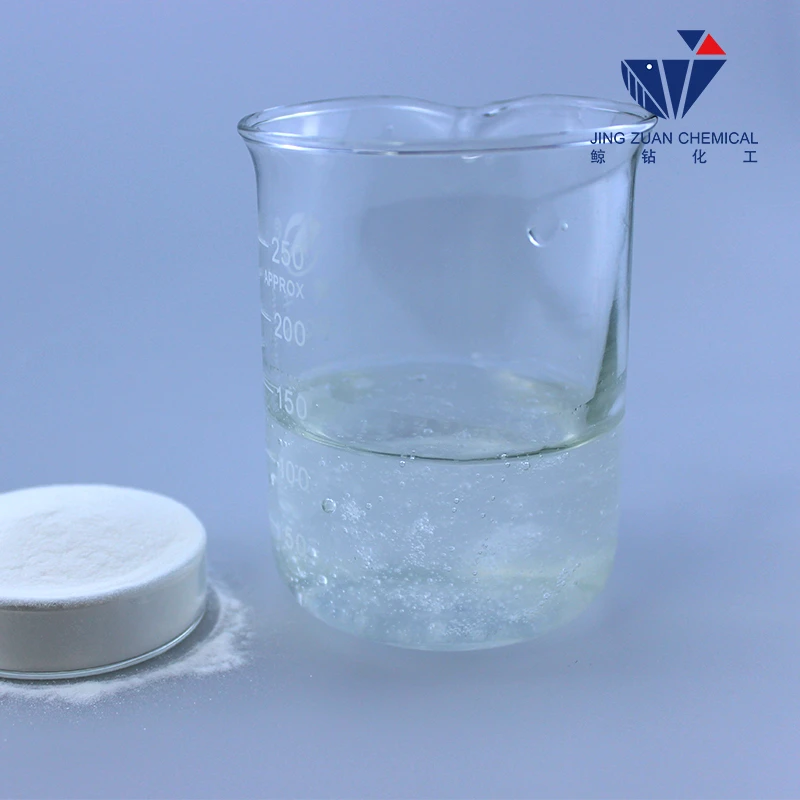
Nov . 12, 2024 23:46 Back to list
hydroxyethyl cellulose viscosity concentration
Understanding the Relationship Between Hydroxyethyl Cellulose Viscosity and Concentration
Hydroxyethyl cellulose (HEC) is a water-soluble polymer derived from cellulose, widely used in various industries due to its unique properties. It plays a crucial role in the formulation of paints, cosmetics, food products, pharmaceuticals, and many other applications. One of the key characteristics of HEC is its viscosity, which is influenced by its concentration in solution. This article delves into the relationship between hydroxyethyl cellulose viscosity and concentration, highlighting its importance in practical applications.
The Structure and Properties of Hydroxyethyl Cellulose
HEC is created by the substitution of hydroxyethyl groups on the cellulose backbone, enhancing its solubility in water. This modification helps retain the structural integrity of cellulose while imparting beneficial properties. HEC is known for its ability to form clear, stable solutions, and it can significantly alter the rheological properties of liquids, making it a valuable additive in a variety of formulations.
Viscosity, the measure of a fluid's resistance to flow, is a critical property when assessing the performance of HEC in different applications
. Understanding how viscosity changes with concentration allows formulators to optimize formulations for specific end-use characteristics.Viscosity and Concentration Relationship
The viscosity of HEC solutions depends on several factors, including molecular weight, concentration, temperature, and the presence of other components. Generally, as the concentration of HEC in a solution increases, the viscosity also increases. This phenomenon can be attributed to the interactions between HEC molecules as their concentration rises.
At low concentrations, HEC molecules are dispersed relatively freely in the solution, resulting in low viscosity. However, as concentration increases, the molecules encounter each other more frequently, leading to entanglement and interaction. This network of HEC molecules creates resistance to flow, thereby increasing viscosity.
hydroxyethyl cellulose viscosity concentration

The increase in viscosity is not always linear; at different concentrations, the viscosity may change at varying rates. For instance, at lower concentrations, a slight increase in concentration can lead to a significant increase in viscosity. Conversely, at higher concentrations, the increments in viscosity may begin to plateau as the system becomes saturated.
Practical Implications
Understanding the viscosity-concentration relationship is crucial for formulators in various industries. In the paint industry, for example, the viscosity of HEC influences the flow and application properties of the paint. A higher viscosity can enhance the stability of the paint, prevent sedimentation, and optimize the application process. However, overly high viscosity can make application difficult, leading to issues like non-uniform coverage. Thus, it is essential to find a balance based on the desired properties of the final product.
In cosmetics, HEC is often used as a thickening agent in lotions and creams. The desired viscosity affects how the product feels on the skin, its spreadability, and its overall aesthetic appeal. Formulators must carefully select the concentration of HEC to achieve the intended texture and performance.
In pharmaceuticals, the viscosity of HEC can impact the release characteristics of drug formulations. It is commonly used in suspensions and gels, where its viscosity affects the stability and bioavailability of active ingredients. A thorough understanding of how concentration influences viscosity ensures that pharmaceutical products meet regulatory requirements and provide intended therapeutic benefits.
Conclusion
The relationship between the viscosity of hydroxyethyl cellulose and its concentration is a fundamental aspect that influences its performance in various applications. By comprehending how viscosity varies with concentration, formulators across multiple industries can optimize their products to achieve desired qualities. Whether in paints, cosmetics, or pharmaceuticals, adjusting the concentration of HEC allows for tailored formulations that meet specific functional and aesthetic requirements. Continued research and practical experimentation will further refine our understanding of HEC and enhance its application potential, solidifying its status as an essential polymer in modern formulations.
-
Versatile Hpmc Uses in Different Industries
NewsJun.19,2025
-
Redispersible Powder's Role in Enhancing Durability of Construction Products
NewsJun.19,2025
-
Hydroxyethyl Cellulose Applications Driving Green Industrial Processes
NewsJun.19,2025
-
Exploring Different Redispersible Polymer Powder
NewsJun.19,2025
-
Choosing the Right Mortar Bonding Agent
NewsJun.19,2025
-
Applications and Significance of China Hpmc in Modern Industries
NewsJun.19,2025







